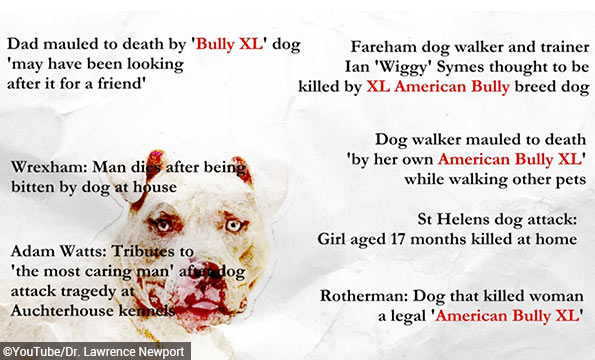Bend Dog Owner Pleads Guilty to Criminally Negligent Homicide

"Dirt World," a transient camp near Bend, where three pit bulls killed a homeless man.
Dog Owner Sentenced
UPDATE 12/29/23: Last week, Jessica Rae "Charity" McCleery, plead guilty to criminally negligent homicide and maintaining a dangerous dog in connection to the dog mauling death of 56-year old Joseph Keeton back in July. On Friday, McCleery was sentenced to an expected 3-year prison term. In exchange for the plea agreement, the second-degree manslaughter charge was dismissed. Had a plea agreement not been reached, an 8-day criminal trial was scheduled to begin on January 9, 2024.
McCleery admitted to leaving her three pit bull-mastiff mix dogs unattended and unleashed on the night of July 19 at the homeless encampment. She did this knowing her dogs had killed other animals and bitten three people so badly that they required hospitalization. One of Keeton's daughters, Kansas, said in a statement, "Our dad suffered far worse than Jessica’s punishment will be, and we feel that it is just." The three dogs involved, "D.J., Littlez and Precious," remain at BrightSide Animal Center.
09/16/23: Multiple Felony Charges
A Bend woman has been indicted on charges of second-degree manslaughter and criminally negligent homicide, both Class B felonies, in connection to the dog mauling death of 56-year old Joseph Keeton. Jessica Rae "Charity" McCleery, 38-years old, is accused of being reckless and criminally negligent after her three pit bull-mastiff mix dogs attacked Keeton "for a prolonged period of time," killing him, at a homeless encampment in the Juniper Ridge area near Bend on July 19, 2023.
A Deschutes County grand jury returned the indictment Friday morning, and a warrant was issued for McCleery's arrest that afternoon, reports the Bend Bulletin. Her bail has been proposed at $100,000, according to the warrant. As of Friday afternoon, McCleery was not listed in the Deschutes County Jail. Initially, police stated that McCleery could face a lower charge, a Class C felony under Oregon's dangerous dog attack statue. The charges on the indictment, however, are more serious.
07/28/23: Fundraiser for Burial
On Friday, KTVZ reported that family members of Joseph Taylor Keeton started a GoFundMe to help pay expenses for his funeral arrangements. "We will be using the funds to bury him, along with the ashes of his mother, in a very simple pine casket where he can be given back to Mother Earth," the fund organizer states. Keeton was mauled to death by up to three pit bull-mixes at a homeless encampment last week on the outskirts of Bend. So far, the fund has raised just over $10,000.
"In the early hours of July 19, 2023, our father was violently killed in a dog attack in a homeless encampment in Bend, Oregon. The savage nature of his death highlights the vulnerabilities that homeless people face, the inevitable fate of those that society has discarded as hopeless and incurable. What we fail to consider beyond our myopic lens is that these human beings are people, people with stories, families, and depth. Here is Joe Keeton’s story." - GoFundMe.com
The fund proceeds to tell Keeton's story, including that he was "a deeply creative artist, a cinephile, and a spiritual man." Joe was "charismatic, loved animals (the irony is not lost on us), and he could be incredibly empathetic and compassionate," states the fund. "He was also a fox, very good-looking, and almost pursued a modeling career." After struggling with drug abuse at an early age, he began attending church, where he met his future wife. They had three girls together.
In subsequent years, he injured his back and was prescribed Oxycontin. "He naturally became addicted, and within a year or two, he had abandoned his family in search of the relief that only opiates could provide," states the fund. That led to his Methamphetamine use. "He became a bottomless pit of pain for his father and mother, the latter of whom spent countless dollars on rehab centers that Joe weaved in and out of, and which we believe sent her to an early grave."
Despite his circumstances, Keeton was gracious, generous and enthusiastic. He also "held profound conversations and changed the minds of many people about homelessness," states the fund. "He gave people the clothes off his back, and shared what little food he had with others who were also hungry." His daughters describe him as a "problematic teenager, then a devoted father and husband and churchgoer, then a grad student making films, and finally, a wanderer."
They said the vicious dog attack is unforgivable, that he suffered gravely and that he was failed by societal systems. "The fact that our father met his end by the vicious attack of three pit bulls is unforgivable. He was mauled for a prolonged period of time. He suffered greatly. He was failed by so many systems (please take a moment to educate yourselves on the truth about pit bull breeding and ownership, mental illness, and drug addiction), as most homeless people are."
Later today, KTVZ will speak with his children and provide an update on his death investigation. We hope the justice system will not fail Keeton too. However, as followers of DogsBite know, only 20% of fatal dog maulings result in criminal charges. In 2021, after a cane corso breeder's dogs killed two homeless people 3.5 months apart, Cocke County sheriff's officials abandoned the case. The dogs' owner, Charles Owensby, had previously ordered one of his dogs to attack a man too.
07/20/23: Man Killed by Pit Bulls
Bend, OR - On Wednesday, the Deschutes County Sheriff's Office confirmed that Joseph Taylor Keeton, 56-years old of Bend, sustained serious injuries in a dog attack and died. At about 1:15 am, deputies were dispatched to an "unknown problem" in a Juniper Ridge area known as “Dirt World.” Upon arrival, deputies discovered Keeton, who had lost a substantial amount of blood, had been attacked by animals. Deputies applied a tourniquet and began life-saving measures.
Bend Fire arrived at the scene and transported Keeton to St. Charles Medical Center in Bend, where he later died. The initial investigation determined that up to three pit bull-mastiff mixes belonging to Jessica Rae "Charity" McCleery, 38-years old of Bend, inflicted the deadly attack. McCleery assisted officers in crating the offending dogs and is cooperating with the investigation. Deschutes County Sheriff’s Office detectives also responded to the scene to assist with the investigation.
Deschutes County Sheriff's Office, Oregon
Male Succumbs to Injuries as a Result of Dog Attack in Transient Camp
Release Date: July 19, 2023
Victim: Joseph Taylor Keeton, 56-year-old male, Bend
Dog Owner: Jessica Rae Charity, 38-year-old female, BendOn July 19, 2023, at approximately 1:15 am, deputies from the Deschutes County Sheriff’s Office were dispatched to an unknown problem in the area commonly referred to as “Dirt World”.
Upon arrival deputies discovered a male subject that appeared to have been attacked by an animal or animals. The male, later identified as Joseph Taylor Keeton, had lost a substantial amount of blood, deputies applied a tourniquet and began life saving measures employing CPR, and applying an AED.
Bend Fire/Paramedics arrived and transported Keeton to St. Charles, Bend.
During the course of the initial investigation, it was determined up to three Pitbull/Bull Mastiff mix dogs may have been responsible for the life-threatening injuries sustained by Keeton.
The owner of the three dogs, Jessica Rae Charity, assisted in crating the offending dogs and is cooperating with the investigation.
Deschutes County Sheriff’s Office detectives responded to the scene to assist with the investigation.Investigators were notified Keeton succumbed to his injuries and was pronounced deceased at the hospital.
Photographs on Charity's Facebook page show multiple large pit bull-mixes. "Diesel," a male, is seen strengthening it jaws by hanging from a tree in "Dirt World" in 2020. "Confucius," a red nosed female went missing at the same time. "D.J.," a male, is seen in a video in March 2021, which depicts the dog inside of a car ready to attack a "statue" of a deer as Charity drives through the Sugarloaf Mt. Motel parking lot off Highway 97 in Bend. Charity states on the post, "What a statue will do to my dog!"
Authorities said Charity could face a charge of maintaining a dangerous dog (§ 609.098), a charge we have not previously seen used in the state of Oregon. If a dog kills a person under the statute, it is a Class C felony. A "dangerous dog" means, "without provocation and in an aggressive manner inflicts serious physical injury on a person or kills a person," and/or the keeper of a dog "with criminal negligence, fails to prevent the dog from engaging in an act described in subsection (1)."
609.098 Maintaining dangerous dog. (1) As used in this section, “dangerous dog” means a dog that:
(a) Without provocation and in an aggressive manner inflicts serious physical injury, as defined in ORS 161.015, on a person or kills a person;
(b) Acts as a potentially dangerous dog, as defined in ORS 609.035, after having previously committed an act as a potentially dangerous dog that resulted in the keeper being found to have violated ORS 609.095; or
(c) Is used as a weapon in the commission of a crime.
(2) A person commits the crime of maintaining a dangerous dog if the person is the keeper of a dog and the person, with criminal negligence, fails to prevent the dog from engaging in an act described in subsection (1) of this section.
(3) Maintaining a dangerous dog is punishable as described in ORS 609.990. [2005 c.840 §2]
Note: 609.098 was enacted into law by the Legislative Assembly but was not added to or made a part of ORS chapter 609 or any series therein by legislative action. See Preface to Oregon Revised Statutes for further explanation.
The Bend Bulletin obtained more information about the attack from Deschutes County Sheriff's Office spokesman Sgt. Jason Wall. Keeton had been mauled for “a prolonged period of time,” Wall said. “This isn’t the case of five bites or 10 bites,” Wall said. “It’s bad.” The dogs “were not restrained in any way shape or form,” Wall said. “It’s horrible. I’ve been here over 16 years, and I cannot recall a dog attack that resulted in the death of an individual," Sgt. Wall told The Bulletin on Wednesday.
The Bulletin also discusses potential liability the county could face if it creates an authorized camping site in the Juniper Ridge area, or if it continues the status quo. Both scenarios pose "some level of risk and liability," Deschutes County Legal Counsel Dave Doyle said. In California, Sonoma County and Caltrans were recently ordered to pay nearly $1 million in damages to a Santa Rosa woman who was attacked by a serial pit bull biter on Caltrans property near a homeless encampment in 2019.
While a number of fatal dog mauling victims have been people experiencing homelessness, it is less common when these attack occur within an encampment area. Last year, a homeless man was killed by a dog near an encampment in South Austin. In 2019, Lasaro Macedo was killed by multiple pit bulls in a riverbed homeless community in Madera, California. The dogs owner, Heather Anglin, also a transient, was later charged with manslaughter in connection to his dog mauling death.

Photographs of three adult pit bull-mixes at "Dirt World," a transient camp, on the dog owner's Facebook page in 2020. From left: Confucius (female), D.J. (male) and Diesel (male).

Charity's Facebook page shows that the victim, Joe Keeton, was one of her Facebook friends.
Related articles:
07/22/21: 2021 Dog Bite Fatality: Woman Killed by Dogs in Cocke County; Second Fatal Attack...
02/22/20: 2019 Dog Bite Fatality: Man Mauled to Death by Vicious Pit Bulls in Madera, California
Law enforcement departments across the United States should release consistent "baseline" information to the media and the public after each fatal dog mauling, including these items.





